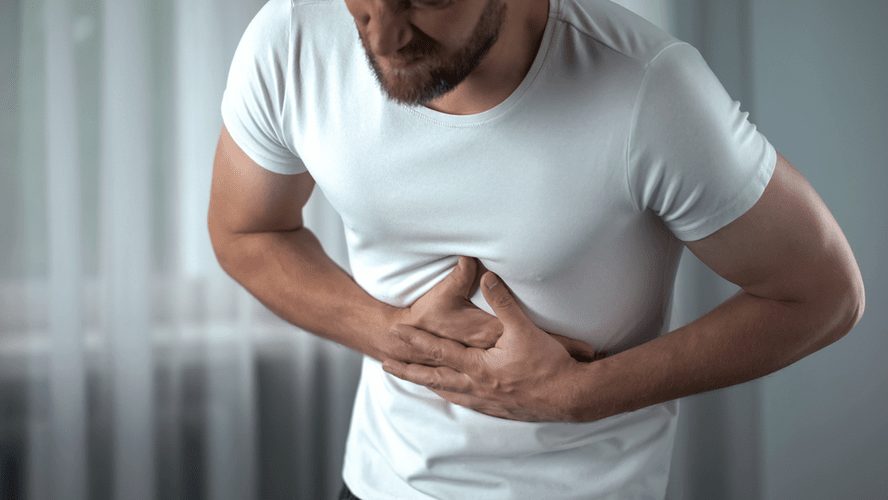Actualidad
What Neurotransmitters Does Nicotine Affect & How Does Nicotine Affect Dopamine?
Faster response times (RT) in trials in which the target was congruent with the alcohol image versus the neutral image indicates AB toward alcohol-related cues via selective attention capture. The results of the aforementioned study was therefore in complete contrast to the results published by[60] which found a positive correlation of the short (S) allele with binge-drinking behavior, drinking more alcohol per occasion, as well as drinking to get drunk more often. Together, medication and behavioral health treatments can facilitate functional brain recovery. A dopamine hit brings about pleasure, and then is quickly followed by pain, or a come-down, in order to keep us motivated. Lembke says this balancing see-saw of pleasure and pain made sense in the time of early humans, when we had to constantly search for our basic needs – food, water, shelter.

It produces less of the neurotransmitter, reducing the number of dopamine receptors in the body and increasing dopamine transporters, which carry away the excess dopamine. Researchers are investigating whether alcohol and dopamine drugs that normalize dopamine levels in the brain might be effective in reducing alcohol cravings and treating alcoholism. To activate hippocampal GABAergic neurons, serotonin binds to the 5-HT3 receptor.
freeExpert Alcohol Masterclass
One factor contributing to the development of AUD may be the change in synaptic signaling in the caudate and putamen that could contribute to a bias toward sensory-motor circuit control of behavior and inflexible alcohol consumption [33, 34]. As an important regulator of behavioral output, dysregulation of dopamine neurotransmission is implicated in theories of AUD development [13, 16, 35]. Acutely, in vivo alcohol administration dose-dependently increases cortical, mesolimbic, and nigrostriatal dopamine in rodents [36]; an effect attributed to enhanced dopamine neuron firing [37]. However, in rodent and macaque brain slices, an acute alcohol challenge following chronic alcohol exposure (inhalation or drinking) decreases dopamine release in the nucleus accumbens (NAc) in vivo and ex vivo preparations [24, 38]. Beyond the NAc, chronic alcohol exposure has varied effects on dopamine release that are brain region and species dependent.
And you don’t necessarily have to be a heavy drinker—which the CDC categorizes as 15 or more drinks for men or eight drinks or more for women per week—to experience intense sugar cravings after cutting out alcohol. Your unique neurobiology will influence whether you experience intense cravings or not, says Weiss. I couldn’t stop wondering why my preference for minty cocktails had turned into a craving for mint chocolate chip ice cream. So, I reached out to two psychiatrists who specialize in alcohol addiction for some intel on the physiological and psychological factors at-play. If you are sober-curious and looking for a starting point, talk with your primary care provider.
Subjects
For the dopamine uptake rate (Vmax) data, two-factor ANOVAs (treatment and brain region) were used. 4, the final quinpirole treatment time points (i.e., after 30 min in quinpirole) were analyzed with a two-factor ANOVA (treatment https://ecosoberhouse.com/ group and region). Detailed methods for these assays are available in Supplementary Materials and Methods. Like the neurotransmitter serotonin, which helps regulate mood, dopamine is involved in many psychological illnesses.
Although the study of neural integration is in its infancy, enough has been learned to help guide future research. This article suggests mechanisms by which alcohol consumption may affect multiple neurotransmitter systems to influence behavior. Barbiturates and benzodiazepines Much less is known about self-administered doses of barbiturates or benzodiazepines. Barbiturates [148, 149] and benzodiazepines [150, 151] are self-administered both intravenously and intracranially into the VTA [152, 153] by animals. Benzodiazepines increase VTA dopamine neuron firing and induce LTP in glutamatergic inputs to VTA dopamine neurons through positive modulation of local GABAA receptors [154–157].
Dopamine D2/3 autoreceptor sensitivity was decreased in chronic alcohol self-administering male macaques
This disynaptic mechanism involves acetylcholine released from cholinergic interneurons activating nAChRs on dopamine axons to induce dopamine release. Thus, any changes to cholinergic signaling in striatum might also influence changes in dopamine release. However, we found no significant differences in the cholinergic contribution to dopamine release between multiple abstinence and control males in Cohort 3 but we did find a trend toward reduced cholinergic driven dopamine release in the putamen of alcohol-consuming subjects. Similarly, in a limited set of putamen slices from the female cohort, we observed a potential reduction in cholinergic driven dopamine release in alcohol monkeys relative to controls (Fig. S1).

In this neurodegenerative disorder, the decline begins with the dopamine-producing cells in the brain where movement is coordinated. As these cells degrade, motor function is compromised, which includes tremors, rigidity, bradykinesia or slowed movement, as well as changes in speech and gait. Successively higher levels of organization integrate the various functions of adjacent groups of neurons. At the highest level of complexity are neural pathways, sequences of neurons communicating through several brain regions (Shepherd 1994). The fact that dopamine-depleted animals already have responses to rewards and punishers allows a stronger definition of motivation than has been offered in the past; the level of motivation varies with responsiveness to predictive stimuli in the environment. The distinction here is between predictive stimuli that lead toward or away from rewards or punishers and rewarding and punishing stimuli themselves, to which dopamine-depleted animals continue to respond.
Substance Abuse Treatment Programs
Serotonin is produced in and released from neurons that originate within discrete regions, or nuclei, in the brain (Cooper et al. 1991). Many serotonergic neurons are located at the base of the brain in an area known as the raphe nucleus, which influences brain functions related to attention, emotion, and motivation. The axons of the neurons in the raphe nucleus extend, or project, throughout the brain to numerous regions with diverse functions. These brain regions include the amygdala, an area that plays an important role in the control of emotions, and the nucleus accumbens, a brain area involved in controlling the motivation to perform certain behaviors, including the abuse of alcohol and other drugs. In these brain regions, the axon endings of the serotonergic neurons secrete serotonin when activated. The neurotransmitter then traverses the small space separating the neurons from each other (i.e., the synaptic cleft) and binds to specialized docking molecules (i.e., receptors) on the recipient cell.
For example, the interaction of serotonin with one type of receptor stimulates the formation of small molecules (i.e., second messengers) within the cell. Second messengers interact with other proteins to activate various cellular functions, such as changes in the cell’s electrical activity or in the activity of certain genes (see figure). These changes can result either in the inhibition or the excitation of the signal-receiving neuron, depending on the cell affected. Through these mechanisms, serotonin can influence mood states; thinking patterns; and even behaviors, such as alcohol drinking. To be honest, while drinking increases a person’s dopamine levels at first, excessive and frequent binge drinking might cause the brain to adapt to the dopamine overflow. In a healthy functioning brain, only a certain amount of dopamine is released, and they rarely fill all of the dopamine receptors that are available.















